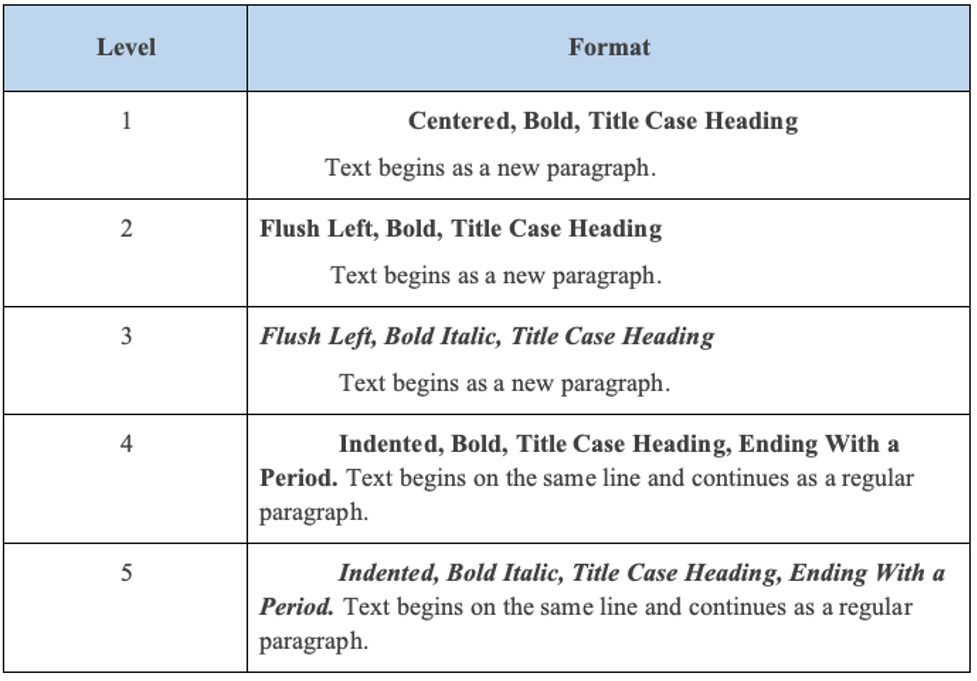The American Psychological Association (APA) introduced the 7th edition of the APA Publication Manual (in October 2019), which replaces the 6th edition of the manual published in 2009. Since then, several things have changed. This article discusses the 9 most important changes in the 7th edition of the APA manual.

There are several academic citation styles such as APA, MLA, Chicago/Turabian, and IEEE. APA is the most common style used to cite sources within the social sciences. This article will give you a brief guide on the 7th edition of the APA Publication Manual (published in October 2019). For more information, please consult the APA Publication Manual (7th edition).
APA citation style is the official style of the American Psychological Association (APA) and commonly used to cite sources in psychology, education, and the social sciences. The APA style originated in a 1929 article published in Psychological Bulletin that framed the basic guidelines. These guidelines were eventually expanded into the APA Publication Manual and updated regularly.
APA Style consists of rules or guidelines that a publisher observes to ensure a clear and consistent presentation of a manuscript. The purpose of the APA style is to uniform use of such elements as selection of titles, headings, subheadings, citation of references, tone, punctuation, and abbreviations, presentation of numbers and statistics, formatting of tables and figures, and many other elements that are a part of written material.
The American Psychological Association (APA) introduced the 7th edition of the APA Publication Manual (in October 2019), which replaces the 6th edition of the manual published in 2009. Since then, several things have changed. Here are some of them:
In-text citations are shortened.
Publisher’s location is no longer included in the reference when you cite from a print book.
Up to 20 authors in the reference list format was updated.
DOIs are formatted the same as URLs.
URLs are no longer preceded by “Retrieved from,” unless a retrieval date is needed.
For ebooks, the format, platform, or device (e.g., Kindle book) is no longer included in the reference.
Inclusive bias-free language
Tables and figures formats were updated.
The 7th edition details these changes by providing better and more extensive guidelines. This blog summarizes the most important changes that you should know about. The most important changes regarding references and in-text citations in the 7th edition of the APA are as follows:
In-text citation rule has changed from APA 6th edition guidelines on using “et al.,” which recommend listing all author names in the first citation up to five authors but then using “et al.” for the second and subsequent citations.
According to the 7th edition of the APA Publication Manual, the in-intext citation for works with three or more authors is now abbreviated right from the first citation. You only include the first author’s name and “et al.”
|
APA6th edition |
(Alison, Brier, Levy, & Wan, 2019) |
|
APA 7th edition |
(Alison et al., 2019) |
See this article for more information and examples about the use of ‘‘et al.’’ in APA 7th edition.
APA Manual 6th edition requires you to include the publisher location when you cite it from a print book. The city and state should be included for US-based publishers, the city and country for publishers anywhere else.
In the 7th edition of the APA manual, you do not need to include the publisher location or databases where you retrieved it.
When the author and publisher are the same, omit the publisher as well.
|
APA 6th edition |
Wan, T.H. (2002). Evidence-based health-care management. Boston: Kluwer Academic Publishers. |
|
APA 7th edition |
Wan, T.H. (2002). Evidence-based health-care management. Kluwer Academic Publishers. |
|
APA 7th edition |
The American Psychological Association. (2020). Publication manual of the American Psychological Association (7th ed.). |
With the new update, last names and initials for up to 20 authors in the reference list should be provided in the list of reference.
For a work with up to 20 authors, include all of the names in the reference.
When the work has 21 or more authors, replace all authors after the 19th (except the final author) with ellipses, followed by the final author.
Parenthetical citation: (Wiskunde et al., 2019)
Narrative citation: Wiskunde et al. (2019)
|
APA 6th edition |
Wiskunde, B., Arslan, M., Fischer, P., Nowak, L., Van den Berg, O., Coetzee, … Kovács, A. (2019) |
|
APA 7th edition |
Wiskunde, B., Arslan, M., Fischer, P., Nowak, L., Van den Berg, O., Coetzee, L., Juárez, U., Riyaziyyat, E., Wang, C., Zhang, I., Li, P., Yang, R., Kumar, B., Xu, A., Martinez, R., McIntosh, V., Ibáñez, L. M., Mäkinen, G., Virtanen, E., . . . Kovács, A. (2019). Indie pop rocks mathematics: Twenty One Pilots, Nicolas Bourbaki, and the empty set. Journal of Improbable Mathematics, 27(1), 1935–1968. https://doi.org/10.0000/3mp7y-537 |
Most journal articles and books have a Digital Object Identifier (DOI) assigned to them.
This unique identifier is stable (it doesn’t change over time) and makes retrieving a source easier for readers.
With the APA Manual 7th edition, DOIs are formatted the same as URLs.
The label “DOI:” is no longer used in APA style.
|
APA 6th edition |
:10.0000/3mp7y-537 |
|
APA 7th edition |
With the APA Manual 7th edition, URLs are no longer preceded by “Retrieved from,” unless a retrieval date is needed.
The website name is included (unless it’s the same as the author).
Web page titles are italicized.
|
APA 6th edition |
Bologna, C. (2019, October 31). Why some people with anxiety love watching horror movies. HuffPost. Retrieved from https://www.huffpost.com/entry/anxiety-love-watching-horror-movies_l_5d277587e4b02a5a5d57b59e |
|
APA 7th edition |
Bologna, C. (2019, October 31). Why some people with anxiety love watching horror movies. HuffPost. https://www.huffpost.com/entry/anxiety-love-watching-horror-movies_l_5d277587e4b02a5a5d57b59e |
With the 7th edition of the APA Manual, ebooks from academic databases are treated the same as print books.
Database information is no longer required for ebooks.
The formats or devices are no longer required in the reference.
The publisher is included in the reference.
If available, DOI or non-database URL should be included.The DOI is formatted according to the new 7th edition guidelines.
|
APA 6th edition |
Kool, I. M. (2013). Loving APA all through graduate school. [Kindle version]. doi: http://doi.org/10.543w20.x032 |
|
APA 7th edition |
Kool, I. M. (2013). Loving APA all through graduate school. Three Letters University Press.https:/doi.org/10.543w20.x032 |
The word ‘Article’ is included before an article number or eLocator for a journal article without a page range.
|
APA 6th edition |
Burin, D., Kilteni, K., Rabuffeti, M., Slater, M., & Pia, L. (2019). Body ownership increases the interference between observed and executed movements. PLOS ONE, 14(1), e0209899. |
|
APA7th edition |
Burin, D., Kilteni, K., Rabuffeti, M., Slater, M., & Pia, L. (2019). Body ownership increases the interference between observed and executed movements. PLOS ONE, 14(1), Article e0209899. |
The 7th edition of the APA Publication Manual encourages authors to use bias-free language and help them reduce bias around topics such as gender, age, disability, racial and ethnic identity, and sexual orientation.
The new edition encourages authors to use they/their instead of he/she or his/her. Thus, avoid using “he or she” to refer to people of unspecified gender.
Use words to define characteristics relevant and distinguishing among people.
Be specific about age ranges, types of conditions, gender identity, origins and affiliations of people, sexual orientation, and their socio-economic background or status.
Here are some examples:
The singular “they” or “their” is endorsed as a gender-neutral pronoun.
|
APA 6th edition |
The results will depend on how he or she analyzed the data at hand. |
|
APA 7th edition |
The results will depend on how they analyzed the data at hand. |
Use descriptive phrases instead of using adjectives as nouns to label groups of people.
Transsexuals (Incorrect)
Transgender people (Correct)
Instead of using broad categories, give specific ages ranges
People 50 and over (Incorrect)
People in the age range of 50 and 60 (Correct)
More font options available:
Calibri 11, Arial 11, Lucida Sans Unicode 10, Times New Roman 12, and Georgia 11.
No more running head
The running head is omitted in student papers. If used, the running head is identical on all pages, including the title page. No ‘Running head:’ notation on the title page.
|
APA 6th edition |
(Title page) Running head: THE EFFECT OF BURNOUT ON HRQOL |
|
APA 7th edition |
(Title page) THE EFFECT OF BURNOUT ON HRQOL |
Headings
The following table demonstrates how to format headings in APA Style (Source: Publication Manual of the American Psychological Association).

Note. In title case, most words are capitalized.
Best Edit & Proof expert editors aim to provide your manuscripts with proper scholarly and academic tone and style. They will significantly improve the chances of having your research manuscript accepted for publishing. They provide subject-area proofreading and editing services in several fields categorized under various disciplines. With our extensive knowledge and expertise, we will help you find the right tone and style for your manuscript.
If you need our subject-area editors to format your manuscripts, giving you the fundamental rules for formatting your manuscripts as described in your guidelines, such as APA, MLA, or Chicago/Turabian styles, then contact us. At Best Edit & Proof, our proofreaders and editors edit every type of academic paper. We have a user-friendly website, and a simplified ordering process.
If you would like our subject-area editors and language experts to work on your project for the improvement of its academic tone and style, then please visit the order page. It is easy! It takes only a few minutes to submit your paper and complete the process. Click here to see how it works.

We have flat-rate pricing based on our type of service (editing or proofreading), word count, and turnaround time. Enter your word count or copy and paste your document into our pricing calculator to get an instant quote.
If you need support for editing and proofreading services, contact us. You can also e-mail us or use the 24/7 live chat module to get direct support. We have a 24/7 active live chat mode to offer you direct support along with qualified editors to refine and furbish your manuscript. Alternatively, you can text us through our WhatsApp business line.
Follow us on Twitter, LinkedIn, Facebook, Instagram, and Medium.
For more posts, click here.
This article discusses the nine most important changes in the 7th edition of the APA manual publication. To give you an opportunity to practice your proofreading, we have left a few spelling, punctuation, or grammatical errors in the text. See if you can spot them! If you spot the errors correctly, you will be entitled to a 10% discount.
How to Cite Sources in APA Referencing Style | With APA 7th Edition Update
30.11.2020
Importance of Citations in Academic Writing
05.03.2022
How to Use ‘‘et al.’’ in APA Style (7th Edition)
28.11.2020
A Complete Guide to MLA In-Text Citations
01.06.2021
MLA Paper Format: How to Format a Paper in MLA Style
31.05.2021
How to Format DOI in APA Style (APA 7th Edition Update)
29.11.2020
How to Cite Web Pages in APA Style (7th Edition Update)
16.12.2020

The acronym ‘‘et al.’’ is an abbreviation for the Latin term ‘et alia,’’ meaning ‘‘and others’’ and used in academic in-text citations when referring to a source with multiple authors. Depending on the number of authors a reference has, an APA in-text citation is abbreviated by using ‘et al.’ after the first author’s last name.
Continue Reading
The American Psychological Association (APA) introduced the 7th edition of the APA Publication Manual in October 2019. This edition replaced the previous one, the 6th edition of the manual. Since then, several things have changed. The latest edition also updated the formatting of digital object identifiers (DOI) in APA Style. This article addresses when to include DOIs and uniform resource locators (URLs) in APA Style references.
Continue Reading
One of the defining aspects of academic writing is that it is research-oriented. Academic authors constantly refer to and review credible literature in their field of study to succor their academic arguments and plausibly divulge the contents of their manuscripts to the readers. However, as much as it is necessary for academics to refer to trustworthy sources, correctly mentioning them in-text or in the bibliography is equally important. This is where the concept and importance of citations come into the picture.
Continue Reading